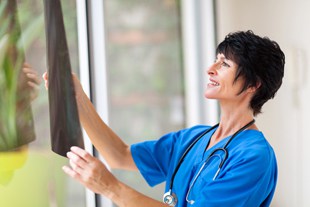Thermography Fact Sheet
The risk of death from breast cancer is a real threat to women, especially older women. Around one in eight women develop cancer of the breast at some point during their lives. A thermography is just one of the many prescreening tools that can help to save lives by detecting breast cancer early enough to increase the chance of survival.
Thermography is also known as thermal imaging. It uses special equipment that reveals the temperature of the breast’s skin. This information is helpful because cancer cells multiply quickly and the area around a tumor has increased blood circulation and metabolism, raising temperature. Areas that are precancerous may also have a higher temperature.
Overview of the Test
Breast thermography uses an infrared camera that produces images that shows heat and temperature of skin. The test may help to find cancer close to the skin’s surface. A breast with precancerous or cancerous tissue is nearly always hotter than a healthy breast. Thermography does have its limits. It cannot find small cancers and those deep in the breast. Breast thermography should be used with mammograms.
Changes in the blood vessels could indicate growth of harmful cells up to 10 years in advance of other screening tools. Thermography is a highly sensitive procedure that picks up minute changes with the camera and computer imaging.
Evidence and Science behind the Test
More than 800 studies have been conducted on thermography. Most of the studies involved tens of thousands of women. The rates of detection with thermography is around 90 percent. The detection rates goes up to 95 percent when combined with a mammogram and breast exam by a doctor.
Evidence shows that although thermography can find signs of cancer, it does not tell a doctor where tumors are exactly. If women get consistent checkups and use thermography, the survival rate for women elevates by 61 percent.
How it is done
A thermogram is a simple procedure. Patients sit in a heated room and uncover their breasts. A camera takes pictures and sends the images to a specialized computer. Doctors who are trained to read thermograms review the images.
Cost
The cost of a thermogram varies in different areas. Typically, they cost around $100 to $200.
Who does it?
Board certified thermography technicians and thermogram interpreters.
When and How Often
Women should start getting thermograms between ages 20 and 25. Typically, women don’t start getting mammograms until the turn 40 years old, so starting thermogram screening at a younger age could be particularly beneficial for younger women. Women should also perform breast self-examinations at least once a month.
Issues
Thermograms do not provide conclusive evidence of breast cancer, but they are useful screening tests and do not expose women to low-level radiation.
References
- BreastCancer.org
- The Cancer Cure Foundation
- International Academy of Clinical Thermology
- Kathleen Barnes
Last reviewed 26/Feb/2014






